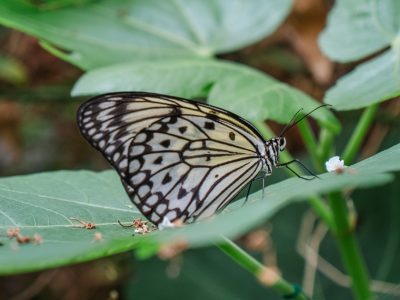By Ilias Berberi
Is evolution the best inventor? With hundreds of millions of years of work and the natural world as its canvas, it would seem so.
From the water-retaining camels of the desert to the long-flying albatrosses of the sea, evolution has shaped the abilities of animals to best help them survive and thrive.
My graduate research explores some of evolution’s most impressive inventions, many of which can be found in birds. Specifically, I study bird flight behaviours and how relationships between body mass, wing sizes, species relatedness and other biological traits have evolved to generate the extravagant flight we see in many species.
These inventions are so extraordinary that we study them to apply their design in everyday technology.
Take, for example, the swift and precise flight of a hummingbird that has helped us develop flying devices that are also capable of intricate manoeuvre. Or an owl’s stealthy flight, which has informed the design of silent and efficient wind turbines. In both cases, biomimicry draws inspiration from natural inventions to design and improve upon our current technologies.
Precise maneuvers
Hummingbirds are some of the tiniest birds in the world. They possess small, lightweight torsos with relatively large wings that allow them to fly remarkably fast with incredible precision. But many types of birds have large wings, so what sets hummingbirds apart when it comes to their amazing manoeuvrability?
The secret lies within their muscles and bones.
Hummingbirds require large wing muscles to continually flap their wings quickly during flight, known as a high wing beat frequency. High wing beat frequency allows hummingbirds to perform their unique hovering flight, especially during their summer visits to your flowers and backyard feeders.
Hummingbirds need large amounts of energy to fly continuously and gather food. Additionally, the adaptation of a long chest bone is the perfect surface needed for wing muscles: the larger the surface of the chest bone, the more muscle can be connected.
In order to hover, hummingbirds flap their wings in the shape of a figure eight. This wing beat style is made possible by continuous “wrist flicks” from their shortened arm bone — a unique characteristic not found in any other bird species. By working together, the muscles and bones of hummingbirds allow for hovering and sideways and backwards flight at speeds that top 50 km/hr.
When scientists looked at how the muscles and bones of hummingbirds come together to generate fast, precise flight in these tiny birds, they became interested in whether these same mechanisms could be engineered.
An example of this inspiration is AeroVironment’s Nano Hummingbird, developed as a prototype for the U.S. Defense Advanced Research Projects Agency. The Nano Hummingbird is a drone device that mimics the flight of hummingbirds to gain an agile, manoeuvrable edge.
These drones can access unreachable locations and gather information via an attached video camera. With more research on hummingbird flight precision and its everyday implications, having drones that can effectively examine natural uncharted territories might happen sooner than previously believed. These drone advancements can be applied to weather monitoring, parcel shipping and even cinematography.
Silent flight
As nighttime predators, owls rely on their silent hunting tactics to successfully capture prey. To take off in flight requires a great amount of lift force to get off the ground, and more energy is needed to stay in the air. Generating this lift force, however, requires owls to flap their large wings. You might think that flapping such large wings would make a ton of noise, defeating the purpose of being stealthy. But does it?
During flight, the movement of a bird’s wings creates turbulence in the air, which makes that familiar flapping sound. However, owls have evolved incredible mechanisms that reduce noise during flight. The secret lies within their feather structures.
Owl wings have feathers with sharp edges, called serrations, along their fronts, which are in contact with the air during flight. These serrations break up the air turbulence that normally causes wind noise, reducing the noise generated during flight. As air flows to the back of the wing, fringe-like structures — similar to the fashion trend — at the end of the feathers further reduce noise by quickly and effectively dispersing any turbulence. Paired with gliding flight, these two feather structures strongly contribute to an owl’s quiet hunt.
Taking a page from the silent flight adaptations in owls, researchers are attempting to use similar turbulence-disrupting structures to reduce the noise produced by wind turbines and fans and improve their efficiency.
Applying the owl’s silent feather adaptations to modern turbine technology promises more efficient conversion of wind energy, and highlights how effective it can be to integrate our natural and technological worlds.
Scratching the surface
The adaptations of hummingbird and owl flight only scratch the surface of nature’s inventions. Additional forms of biomimicry can be found in concussion-preventing technologies inspired by woodpeckers, train designs shaped from the beaks of kingfishers and laser technology influenced by the architecture of colourful bird feathers.
It is clear to see how nature has inspired advancements in technology, and the importance of continuing exploration of these wonderful natural systems on Earth.
This article is republished from The Conversation under a Creative Commons license. Carleton University is a member of this unique digital journalism platform that launched in June 2017 to boost visibility of Canada’s academic faculty and researchers. Interested in writing a piece? Please contact Steven Reid or sign up to become an author.
All photos provided by The Conversation from various sources.
![]()
Monday, May 11, 2020 in The Conversation
Share: Twitter, Facebook



